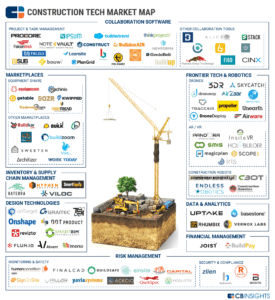Software Stacks: So many solutions, so little time!

Travis Althouse, Implementation Service Manager – MEP
Choices, choices, choices.
Victaulic, Evolve, Clash Preventer, Tag Placement Tool, COINs, KobiTools and more. Those are just some ADD-ONS for the design software in your stack! eSub, Stratus, Revizto, Box, Sharepoint, Viewpoint and more. There are even more software solutions that work tangential to your design software.
So where do we even start? All of these have very different purposes but stacking them correctly is what matters. But where do we even begin evaluating tools?
First off, we need to identify a few things:
- Who is currently using what tools, and for what?
- Who needs the information that the tools provide and for what?
- Where are the holes in communication/workflow in what we are currently doing?
- How will a tool flow with other solutions (field solutions, burn/cut table, estimating)?
As a BIM department decision-maker, it is important to remain humble and recognize that job success goes up exponentially when the installation expert is involved in preplanning. Because of this fact, I always recommend starting here:
- Go down to the fab shop and get a rundown of how they operate.
- Get with your estimators and see how work flows through their department.
- Visit a job site and evaluate how your field teams are accessing information and communicating back to the office.
Only then we can start to evaluate where to begin, and develop some end goals. Always keep in mind that when BIM correctly, you can communicate throughout the entire team, and through all phases of a project. They all must fit together properly.
Now that we have spoken with our team and set some short and long term goals, it is time to gather up a list of possible solutions that will fit with what your designers are currently doing, and provide value to the other “tangential” participants and stakeholders via BIM. Conferences and professional platforms are a great place to gather a shortlist of suggestions that may work for you. Maybe your estimators are working in excel a lot – so something like Kobi Toolkit could be a possible solution to enable Revit to work with spreadsheets. Maybe you are having trouble getting drawings to the field so you need something like Box to give a central place for documents. Maybe you are a fabricator, and you need a streamlined way to spit out spools so something like Stratus is key to enabling your field teams to have input. Regardless of the need for the tool, try to find a solution that fits as many workflows in your organization as possible.
That said, compound, integrated platforms and solutions are the ultimate. What I mean by that is finding a tool that enables multiple workflows when implemented correctly. Going back to something like Kobi Toolkit, you are enabled to bring in data via spreadsheet, and also send out information very easily via spreadsheet. So we can digest estimating information, and also export to our fabrication burn table or pipe cutter. This is one of my favorite things about an ICP, or Integrated Collaboration Platform, such as Revizto. It enables multiple paths to be taken on and allows constant feedback and tracking of multiple processes within your organization and across other teams. Regardless of what path you take with which tool, make sure you get with an expert and know everything that your add-in can do.
 Focus on Implementation and Training: Get everyone up to speed
Focus on Implementation and Training: Get everyone up to speed
To that point, the implementation process is crucial. If available, make sure to get with an expert with the solution who can help standardize and bring awareness where it is needed to drive usage among your team. A lot of times, team members get pushed and pulled from projects and jobs, and may not even know that certain solutions are available to them. Be proactive about getting the tool of choice in the hands of those that need it, and make sure everyone is fully trained in all aspects of the tool that pertain to them. DO NOT expect someone just to know something is there and how to use it. You would be surprised at how often tools are used incorrectly or not maximized, just like in the field. It is up to the BIM Manager to document the processes used and to make sure that training is provided at intervals that make sense.
When establishing training, make sure to stay up to date with updates to the software or add-ons. Most companies that offer a solution develop new tools and typical those developments are industry-driven. So make sure to stay in touch with a rep or customer success professional at all of your tools of choice. Often times, these professionals will know how to mesh their software with all of the others in your contech stack, and provide insight on additional solution options. It is always a good idea to take the advice of people who have “been there done that”, especially at this point in the development of BIM as an overall tool!
Create metrics and track how it is working for you and your team.
Finally, proving ROI is the key to securing funds to renew the software that you have stacked and implemented into your company’s systems. So make sure to track everything, particularly any savings (like cost or time) along the way. Gather usage reports, attach wins/losses to these reports, and also be sure to gather feedback from the end-users. Going to your management and saying “Jim saves 7 hours a week not looking for drawings by using our new tool, and we came in $90,000 under budget” is a lot stronger argument than “they said they can find drawings a lot easier”. Always keep that in mind, and always make the software prove itself.
I challenge all of you to put every solution through the wringer. Put their service/success managers through the wringer. Make your investment work for you! Software solutions should be challenged to be better at all times, especially those in constant development. If you find software you love but think some aspects are missing, don’t hesitate to reach out and give feedback. You never know, maybe it or something close to it can already do what you are looking for. Believe me, the best solution providers LOVE your feedback, and strive to implement anything and everything to make your job and the adoption of BIM easier!


